Text
If I Made An MMORPG
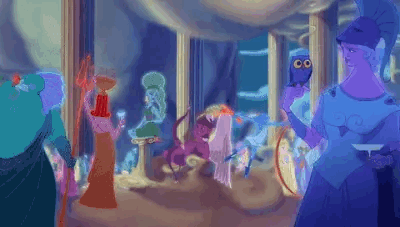
If I were to make an MMORPG type game, I think it'd be cool to set the game in Ancient Greece. Instead of classes, you choose a patron god from among the major Olympians (with room for big names like Persephone, Hecate, Hades, Hestia, and Pan so it's not JUST the official Olympians.) And instead of factions, you align yourself with one of the Ancient Greek City-States.
You are a demigod/hero representing your chosen God and fighting for the domination of your City-State. Whether this is a battle royal between many city-states, or it goes for a more Peloponnesian War thing with Athens vs Sparta. You can also meet and befriend both important figures from Greek history, as well as figures from Greek Myth like Helen of Troy and Odysseus.
For gear, you'd collect legendary items from Greek Mythology, such as Achilles' Armor, Medea's Cauldron, Heracles' Nemean Lionskin, Penelope's Shroud, Agamemnon's Shield of Phobos, Perseus' Mirrored Shield, and of course, more legendary equipment like the Golden Fleece, Hermes' Sandals, Aphrodite's Girdle, or Zeus' Aegis.
The god you pick is your class, so your chosen god affects your playstyle.
Ares, Artemis, Poseidon, and Zeus are Damage type gods.
Apollo, Demeter, Hecate, and Hestia are Support type gods.
Aphrodite, Dionysus, Hermes & Persephone are Control type gods.
Athena, Hades, Hephaestus, and Hera are Guardian type gods.
So, let's say you built your hero, and you want to swear your loyalty to Aphrodite. You're a Control type hero that uses love and beauty to stun and weaken foes. Your class-exclusive gear would include items like Harmonia's Necklace, The Apple of Discord, The Bow of Eros, and Aphrodite's Girdle. You'd then pick a City State, and the game would highlight the areas with strong ties to Aphrodite: such as Korinthia, Kythera, and of course, Athens and Sparta, but you can really pick anywhere. Finally, your main quest givers would be heroes like Adonis, Narcissus, and Aeneas. You could even unlock Epic heroes and gods as companions, with Aphrodite's Legendary ally being Eros.
Though there'd have to be measures to ensure the popular gods like Zeus, Apollo, and Athena aren't just going to steamroll over the players that picked Hestia.
Yes, I am aware of Smite: Battleground of the Gods, but that's a MOBA, not an MMORPG. Two very different genres. You're not building a character up from level 1 in a MOBA.
#greek gods#greek mythology#mmorpg#mmo gaming#game idea#greek pantheon#hellenism#ancient greece#greek myth#video game idea#video games#olympians#mount olympus#theoi#greek history#ancient history
15 notes
·
View notes
Text
Elder Scrolls Online Subclasses

The Subclass feature coming to ESO in June is certainly an intriguing one, and there is cool things one can do with it. It'll allow people to mix and match classes together into one kit, allowing certain abilities to combo together. And there's already some fun things one could do with this. Mixing Ardent Flame from the Dragonknight, Winter's Embrace from the Warden, and Storm Calling from the Sorcerer, you can create a pretty cool elementalist. Or maybe you want to combine the life-stealing properties of the Nightblade with the deathly properties of Necromancer. Maybe you want a dark magic themed character, merging the Sorcerer together with the Necromancer. Or maybe you want to build a Cultist of Hircine by merging the Daedra summoning of the Sorcerer with the nature powers of the Warden.

But that also got me thinking... what if they added standalone subclasses? Options that were maybe just 1 singular skill line with a niche identity? It wouldn't be a full class. It would only exist as a subclass you could spec into. So things like The Divines, The Daedra, the Psijics, Dhovakiin, Dawnguard, The Blades, Mythic Dawn, Greybeards, Morag Tong, Ash'abah, or the Tribunal. Or maybe add something like Bards or Skalds, Knights, Corsairs/Pirates, Witches, Nymphs, Reachmen, Hagravens, Nobles, Merchants, Dwemmer Scholars, or Barbarians. Imagine if swearing your fealty to one of the Great Houses of Morrorwind or the Noble Houses of High Rock could be their own standalone subclasses. You could build a Templar with a Dibellan subclass. Or a Warden with a Hircine Subclass. Imagine a Nightblade that's also a Bard, a Dunmer Sorcerer with a House Telvanni subclass, or a Nord Dragonknight that's also a Dhovakiin.
#elder scrolls online#elder scrolls#the elder scrolls#tes#teso#eso#seasons of the worm cult#cult of worms#mannimarco
13 notes
·
View notes
Text
Mystery Inc as a DnD Party
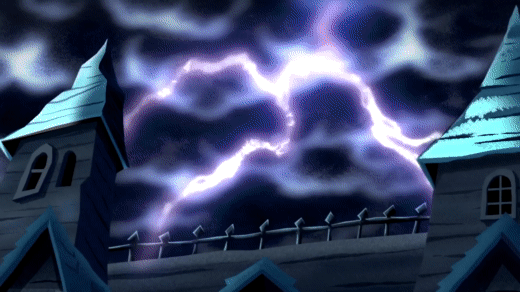
I figured as long as we're still in the vicinity of spooky season, I'd build everyone's favorite gang of teenage mystery solvers as a collective unit. Pulling from their group dynamic to come up with a party roster that will give everyone in the party a designated role.

FRED JONES
PALADIN || OATH OF THE CROWN
INVESTIGATOR BACKGROUND
Skills: Athletics, Insight, Investigation, Persuasion
Freddie is the dimwitted but lovable himbo leader of the team. He's also the muscle, except in moments of athletic skill, when he's outshined by Daphne. His backstory isn't always consistent, but he's usually a jock of some sort. He's not usually all that book smart, but he has a good heart, and inspires his team to success. Paladins who swear an Oath to the Crown hold law and justice above all else, and Fred usually enjoys catching the bad guys and seeing justice served.
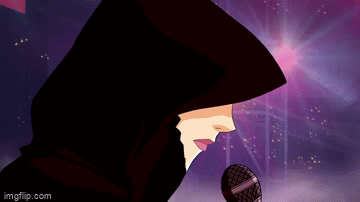
DAPHNE BLAKE
BARD || COLLEGE OF LORE
NOBLE BACKGROUND
Skills: Athletics, Acrobatics, Deception, Insight, Investigation, Persuasion, Sleight of Hand, Performance
As surprising a choice as this might seem, Bard is actually a very appropriate choice for Daphne. Modern Daphne is the most supportive and emotionally intelligent member of the group. From What’s New Scooby-Doo? to Be Cool, Scooby-Doo, Daphne has become the emotional powerhouse of the group. Sensing when her friends are off their game, and offering sage advice to her friends when they need it. She’s also become a very creative girl, skilled in singing, dancing, fashion, design, and more. She’s grown to be the group’s resident skill monkey, almost on par with Velma’s uncanny encyclopedic knowledge on all brainy subjects. If a lock needs picking or the gang needs to get out of a trap, you can count on Daphne to have a nail file, bobby pin, or something else on her person to save the day. She's typically also the face of the group when it's not Fred, meaning she's going to want high Dexterity and Charisma. I chose Lore because Daphne is a reporter in Scooby-Doo on Zombie Island and this is the only real career she's ever had. A lore bard is basically a more magical reporter, and singing the tale of her group's mysterious endeavors.

VELMA DINKLEY
ARTIFICER || ARTILLERIST
SAGE BACKGROUND
Skills: Arcana, History, Investigation, Nature
Velma was the most debatable one for me, as she could be a wizard or an artificer. And I was really leaning toward Wizard, but I had to stay true to Velma's character. She's been a tinkerer and a gadgeteer for a long time now. Velma is absolutely fascinated by robotics. But while Velma in our world can handwave superstitious nonsense, in a world with gods, demons, and real ghosts, I could absolutely see Velma using her knowledge to become a powerful wizard. I even considered the Knowledge Domain Cleric because it's basically designed to be a magical detective, and if Velma was going to worship a deity, it'd be a god of knowledge and reading. Ultimately, I did choose Artificer as it was more in-line with her base character as a skeptic and a scientist, but she would work as a Wizard. Plus, as is, Daphne is the only full-caster in the party.

NORVILLE "SHAGGY" ROGERS
RANGER || CONCLAVE OF THE BEAST MASTER
GUILD ARTISAN BACKGROUND || COOKS & BAKERS
Skills: Animal Handling, Investigation, Stealth, Survival
No surprises here, Shaggy and Scooby are a bonded pair, and the two were going to be joined to each other one way or another. Scooby is technically a Beast of the Land, and there's no Great Dane stat block, so call him a Mastiff if you need to. You can't really build Scooby by himself per se. There's no dog race unless you go Custom Lineage or something, and even then, I'd struggle to assign Scooby a class as he's mostly an animal sidekick. Make sure Shaggy picks up Cooks Untensils and proficiency with them so he can become the party's designated camp chef.

Ultimately, I'm happy with how the team turned out. Fred's the tanky and bulky frontliner, Velma can use her robotics to help solve mysteries, Daphne is the face on top of having so many skills, and Shaggy works with Scooby. Inadvertently, they're also all classes with access to healing spells. So, while I suspect Daphne being the sole full caster will probably assume primary role of group healer, everyone is capable of healing each other up. Making this a great group of supportive friends taking care of each other.
79 notes
·
View notes
Text
DC Rivals: Raven

This is just something I did for fun based on the idea: what if DC Comics made a game similar to Marvel Rivals? So, this is a purely speculative concept piece for Raven, since she's my favorite DC superhero.
Basic Attack: Black Magic Bolt (launches forward a bolt of black magic)
Ultimate: Trigon's Pride (Raven damages all nearby enemies, and remains in Dark Raven form for a few seconds, during which time, her damage output increases by 25%.
Movement: Shadow Form (Raven becomes intangible, increasing her movement speed. Shadow Form reduces incoming damage by 75%, but also reduces damage output by the same amount.)
Ability 1: Telekinetic Grasp (immobilize and damage foes afflicted by Transfer Soul for 1.5 seconds)
Ability 2: Nevermore (Launches Raven's soul self forward, damaging all targets in a straight line.)
Charge Attack: Transfer Soul (3 Charges. Raven transfers a piece of her soul into a target. Slows ability cooldown by 1 second.)
Charge Attack: Soul Shield (Only usable in Shadow Form. Hold to project a forcefield, protecting Raven and nearby allies from damage. Cooldown between uses.)
Passive: Meditative Mind (Raven recovers from Crowd Control effects faster. The effectiveness of Meditative Mind increases when partnered with Nightwing, Starfire, Beast Boy, and Cyborg. Raven can share the effects of Meditative Mind with the Titans.)
#dc comics#dc universe#teen titans#raven roth#marvel rivals#injustice gods among us#teen titans raven#rachel roth#titans#dc titans#dc teen titans
8 notes
·
View notes
Text
How to Play as Alistair Theirin in DnD 5e

I only recently got into playing the Dragon Age games and was drawn to Origins definitely not because a certain handsome knight looked very kissable. So, after installing mods to let Alistair have a boyfriend and making my way through the game, I enjoyed the character enough that I decided to try building Alistair in 5e using the 2024 rules. So, let's see how we can translate the Prince of Fereldan to Dungeons and Dragons.
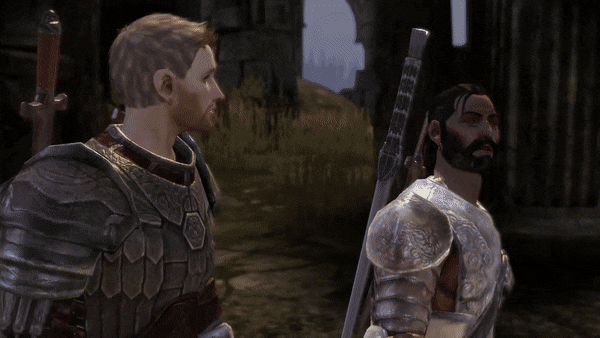
ORIGIN
Alistair is a Human with slight Elven blood. 2024 edition removed Half-Elves, and even if they were an option, I wouldn't call him one. He is a Human in every way that counts. So, we will start by making his Species a Human. Humans gain 1 bonus skill and a free Origin Feat. For his bonus skill, we'll give him Perception as a nod to his elven ancestry. We'll pick the Tough feat to increase his Hit Points.
For his background, Alistair Theirin is the illegitimate son of King Maric Theirin and Fiona. Unable to be raised by his true father, he was raised by his half-uncle Arl Eamon until the Arl took a new wife who felt threatened by the boy's presence, and Alistair found himself sent to the Chantry to live out his life in the monasteries. It is only because Duncan saw potential in him and fought to recruit him as a Grey Warden that Alistair was able to escape the fate of becoming a true Templar. Despite being a common-born bastard, Alistair was raised in Castle Redcliffe by the Arl, which could be reason to call him a Noble. Joining the Chantry at age 10 could certainly count toward the Acolyte background as well. The Chantry did train him to become a Templar, which could justify a Soldier background. All three allow him to boost his Strength, Charisma, or both so you can't go wrong with any of the options. However, being King Maric's illegitimate bastard son plays a very big role in his storyline and has had huge ripple effects throughout his life. As such, it feels like the most important aspect of his backstory and leads me to label him a Noble for +2 STR, +1 CHA, proficiency in History and Persuasion, and the Skilled Feat. The Skilled feat lets Alistair gain 3 more skills, and we'll give him Survival, Deception, and Insight. The boy's not the sharpest spade in the shed, but he's pretty good at knowing when the player character is being bothered by something and knowing when to say something.
Alistair is undeniably Good. He projects a lot of confidence and hides his insecurities behind a veil of humor to keep people at arms length, but he does usually speak in favor of freeing and helping others. Doing the right thing is a surefire way to win approval from him. Even when he disapproves of freeing the blood mage Jowan, he also disapproves if you execute Jowan. He cares a lot about duty, and will begrudgingly admit that he should do something because it is his duty as a Grey Warden to do so, no matter how much he might dislike it. As such, I would label Alistair as Lawful Good.
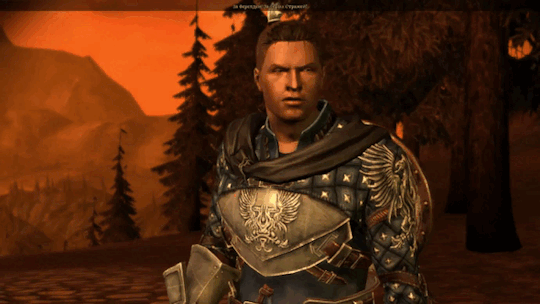
CLASS
PALADIN OATH OF THE WATCHERS
Alistair's class is pretty straightforward. Templars are holy warriors trained by the Chantry to fight mages. As a Grey Warden, he can sense Darkspawn and Blights, and the story involves fighting many Darkspawn, Undead, Demons, and Dragons. He is very obviously a Paladin. The Watchers come the closest to fulfilling the duties of a Grey Warden. They swear an oath to thwart the mischief of extraplanar creatures who would threaten the stability of the multiverse by crossing over into the prime material plane. They can also bolster the party's saving throws against INT, WIS, and CHA saves, which are primarily made as Spell Saving Throws. They also get Detect Magic and Counterspell, making them somewhat better as anti-mage classes. For our Paladin skills, we'll choose Athletics and Religion.
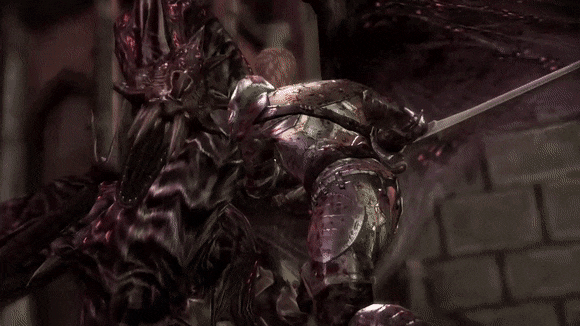
BUILD OPTIONS
I can't assume what technique your DM will use for stats. So, I'm going to use the Standard Array. If you're using Point Buy or rolling for stats, treat the Standard Array as a template for which stats matter the most for Alistair. As a Noble, Alistair gets +2 STR and +1 CHA.
STR 15, DEX 12, CON 14, INT 8, WIS 10, CHA 13
Alistair is prebuilt in Dragon Age Origins to be a Shield & One-Handed Weapon Warrior with a Templar Specialization. As such, we'll focus on building Alistair under the assumption he'll be using a Longsword and Shield.
For his Fighting Style, Dueling is going to make him more effective at using his sword.
At 4th Level, take the Mage Slayer feat to get +1 STR, bringing our STR to 18 and making us better at shutting down mages.
At 8th Level, take Shield Master to get +1 STR bringing our STR to 19, and granting us Evasion on successful Dexterity Saving Throws. This will not only protect us again spells like Fireball, but it'll also potentially negate any damage from a dragon's breath weapon.
At 12th Level, put +1 into STR and CHA capping out our STR at 20 and bringing our CHA to 15.
At 16th Level, take Inspiring Leader as Alistair comes into his own as a leader, raising his CHA by +1 to a total of 16.
At 19th Level, the epic boon Boon of Energy Resilience not only allows Alistair to choose two damage types to become resistant to, he gains the chance to redirect damage of those damage types to other creatures during the fight, allowing him to redirect some of a mage's fireball back at them. However, he could instead choose the Boon of Epic Fortitude to get +40 Hit Points to negate his rather low Constitution score.
Alternatively, if during your campaign Alistair finds items that raise his Strength such as Belts of Giants Strength or Gauntlets of Ogre Power or you just manage to roll high for stats, you might choose to more heavily invest in increasing his CON and CHA. But Mage Slayer and Shield Master are the two most important feats for him to take since fighting mages is what he was specifically trained to do. It is worth pointing out that a higher CHA improves his Aura of Courage, boosting not only his but his allies' saving throws against everything, not just spells.

PALADIN SPELLS
1 Alarm, Detect Magic, Detect Evil & Good, Divine Smite, Protection from Evil & Good 2 Moonbeam, See Invisibility, Find Steed, Shining Smite, Warding Bond, Zone of Truth 3 Counterspell, Nondetection, Crusader's Mantle, Dispel Magic, Remove Curse 4 Aura of Purity, Banishment, Staggering Smite 5 Hold Monster, Scrying, Circle of Power, Destructive Wave, Dispel Evil & Good

ROLEPLAYING AS ALISTAIR
On the surface, Alistair can come across as a proud, confident, charismatic comedian with a knack for cheeky remarks and sarcastic retorts. His sense of humor is rather irreverent, with a mix of self-deprecation. He can also come across as somewhat immature and childish, openly showing hostility toward Morrigan and cracking jokes at Wynne about her age.
Alistair is used to being pushed away by others: by his birth father, by Arl Eamon, by the Chantry. He uses humor to deflect when you try to get to know him, a defense tactic meant to spare him future pain by not allowing a genuine connection to develop. Underneath the swagger, confidence, and humor, Alistair has very low sense of self-worth, always afraid he's not good enough or important enough. To the point that he seems genuinely shocked when the player wants to actually get to know him, and even more surprised when they return his affections. Much of this comes from lacking a sense of belonging and always feeling like an unwanted outcast or an unwelcome intruder. And those that did try to get close to him often only did it because they found out he was a prince and wanted something out of him, leaving him with very few real friends or a real sense of family.
Alistair also doesn't want to take charge. He prefers to be a follower rather than the leader and laments the idea of being looked to or stepping up into leadership. In one dialogue, he fiercely rejects the idea of leading, saying that it just leads to getting lost, people dying, and him ending up stranded with no pants. While this sounds like a Noodle Incident we're never given the full context for, it could be deeper than that. His fear of leadership likely ties back into his feelings of inadequacy and irrelevance, as though he's not good enough to be king, or fearful that he'll make a stupid call that makes everything worse. Alistair's dream life when he's controlled by the Sloth Demon gives us a glimpse into his deepest desire: to be an ordinary man with a happy and loving family. He would be content to find his family, settle down as a loving brother and uncle, and never have to fight again. Which makes it all the more tragic that his sister blames him for her lot in life and he basically has to earn her love. Just one more relationship where he's left to feel unworthy. One more person who only values him as a Prince they can get something out of.
Alistair is very emotionally reactive. Smashing his mother's amulet against a wall as a child. Screaming in the chantry just to see how long it would take for a priest to come check on him. Being consumed by grief after the death of Duncan. Alistair feels things very deeply and wears his heart on his sleeve. When humor fails to deflect, sometimes he'll emotionally lash out with words instead. When he does manage to be reserved, it's him actively suppressing his emotions, such as not wanting to talk about the incident after his sister blames him for ruining her life, or barely saying two words to Arlessa Isolde who is the main reason he was sent to the chantry.
While Alistair is by no means a scholar, he's actually rather astute when it comes to reading people and situations and can be rather thoughtful and wise. I would actually say he's probably got a 14 or 16 in Wisdom in-character. He recognizes when the player has started having dreams of the Archdemon and stays up at night to reassure and comfort them. There's also the rose he plucks in Lothering and later gives to the player if they've romanced him, where he explains that it stuck out to him because it was something beautiful growing in a bleak place. This thoughtful and poetic side of him is rather indicative of a sort of wisdom he doesn't openly showcase a lot, but is there just below the surface.
So, some things work thinking about while playing as Alistair:
He's not very good at hiding how he really feels. Whether it's his dislike for Morrigan or being caught staring at the player's butt by Wynne, subtlety is not one of his strengths.
While Alistair won't raise alarms when you pick locks, lie, intimidate, or pickpocket, he draws the line at cold-blooded murder. This is to say he's not a stock archetype goodie-two-pauldrons paladin that refuses to do anything wrong ever.
He's quick to speak of redemption when the party finds the murderer Sten imprisoned in Lothering, but objects when the party considers freeing the blood mage Jowan imprisoned below Castle Redcliffe.
Alistair does not like dwelling on dark or uncomfortable topics, often either handwaving the issue, refusing to talk about them, or cracking jokes to distract people away from the things he doesn't want to address.
Much of his decision-making comes from the heart, and it takes some convincing to get him to make decisions based on logic.
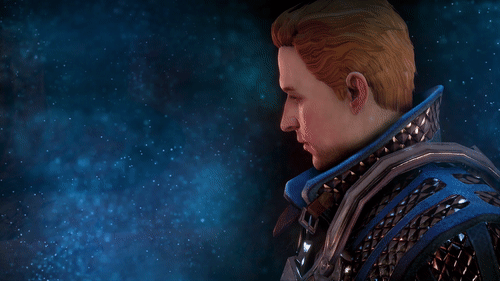
I'm fairly satisfied with how Alistair turned out. His stats could be better, but beyond that, he's doing a fairly good job at translating from Dragon Age to DnD. This is the first time I've written a "how to roleplay" them section so, lemme know if you want me to keep doing that. And while I started with my favorite himbo boyfriend, I really like most of the Origins characters, and I'll probably build a few more of them eventually. But Alistair is the reason I got the game, and by the Maker, he's going to get top billing.
15 notes
·
View notes
Text
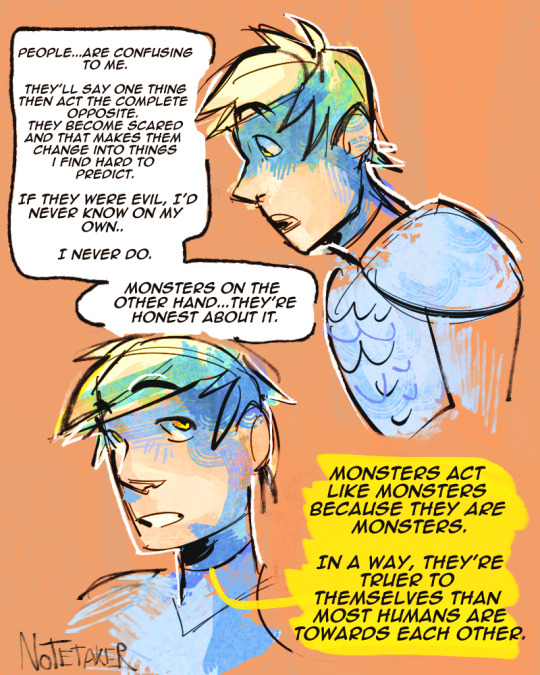
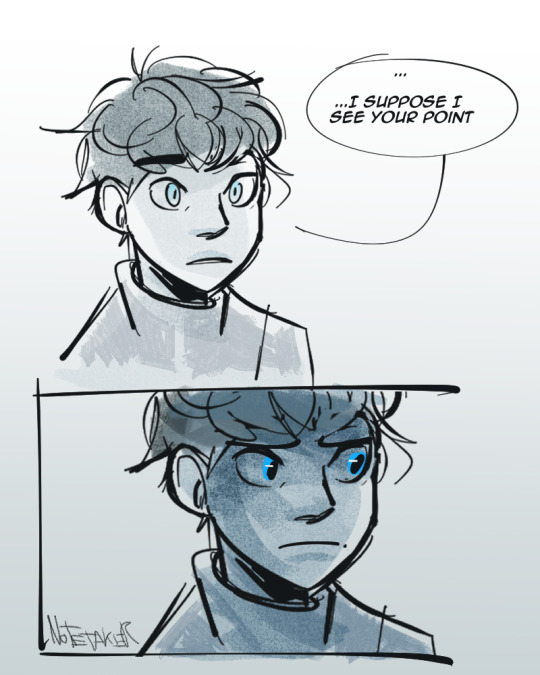
Getting out of the comfort zone can be uncomfortable.
9K notes
·
View notes
Text
How to Play as Alistair Theirin in DnD 5e

I only recently got into playing the Dragon Age games and was drawn to Origins definitely not because a certain handsome knight looked very kissable. So, after installing mods to let Alistair have a boyfriend and making my way through the game, I enjoyed the character enough that I decided to try building Alistair in 5e using the 2024 rules. So, let's see how we can translate the Prince of Fereldan to Dungeons and Dragons.

ORIGIN
Alistair is a Human with slight Elven blood. 2024 edition removed Half-Elves, and even if they were an option, I wouldn't call him one. He is a Human in every way that counts. So, we will start by making his Species a Human. Humans gain 1 bonus skill and a free Origin Feat. For his bonus skill, we'll give him Perception as a nod to his elven ancestry. We'll pick the Tough feat to increase his Hit Points.
For his background, Alistair Theirin is the illegitimate son of King Maric Theirin and Fiona. Unable to be raised by his true father, he was raised by his half-uncle Arl Eamon until the Arl took a new wife who felt threatened by the boy's presence, and Alistair found himself sent to the Chantry to live out his life in the monasteries. It is only because Duncan saw potential in him and fought to recruit him as a Grey Warden that Alistair was able to escape the fate of becoming a true Templar. Despite being a common-born bastard, Alistair was raised in Castle Redcliffe by the Arl, which could be reason to call him a Noble. Joining the Chantry at age 10 could certainly count toward the Acolyte background as well. The Chantry did train him to become a Templar, which could justify a Soldier background. All three allow him to boost his Strength, Charisma, or both so you can't go wrong with any of the options. However, being King Maric's illegitimate bastard son plays a very big role in his storyline and has had huge ripple effects throughout his life. As such, it feels like the most important aspect of his backstory and leads me to label him a Noble for +2 STR, +1 CHA, proficiency in History and Persuasion, and the Skilled Feat. The Skilled feat lets Alistair gain 3 more skills, and we'll give him Survival, Deception, and Insight. The boy's not the sharpest spade in the shed, but he's pretty good at knowing when the player character is being bothered by something and knowing when to say something.
Alistair is undeniably Good. He projects a lot of confidence and hides his insecurities behind a veil of humor to keep people at arms length, but he does usually speak in favor of freeing and helping others. Doing the right thing is a surefire way to win approval from him. Even when he disapproves of freeing the blood mage Jowan, he also disapproves if you execute Jowan. He cares a lot about duty, and will begrudgingly admit that he should do something because it is his duty as a Grey Warden to do so, no matter how much he might dislike it. As such, I would label Alistair as Lawful Good.

CLASS
PALADIN OATH OF THE WATCHERS
Alistair's class is pretty straightforward. Templars are holy warriors trained by the Chantry to fight mages. As a Grey Warden, he can sense Darkspawn and Blights, and the story involves fighting many Darkspawn, Undead, Demons, and Dragons. He is very obviously a Paladin. The Watchers come the closest to fulfilling the duties of a Grey Warden. They swear an oath to thwart the mischief of extraplanar creatures who would threaten the stability of the multiverse by crossing over into the prime material plane. They can also bolster the party's saving throws against INT, WIS, and CHA saves, which are primarily made as Spell Saving Throws. They also get Detect Magic and Counterspell, making them somewhat better as anti-mage classes. For our Paladin skills, we'll choose Athletics and Religion.

BUILD OPTIONS
I can't assume what technique your DM will use for stats. So, I'm going to use the Standard Array. If you're using Point Buy or rolling for stats, treat the Standard Array as a template for which stats matter the most for Alistair. As a Noble, Alistair gets +2 STR and +1 CHA.
STR 15, DEX 12, CON 14, INT 8, WIS 10, CHA 13
Alistair is prebuilt in Dragon Age Origins to be a Shield & One-Handed Weapon Warrior with a Templar Specialization. As such, we'll focus on building Alistair under the assumption he'll be using a Longsword and Shield.
For his Fighting Style, Dueling is going to make him more effective at using his sword.
At 4th Level, take the Mage Slayer feat to get +1 STR, bringing our STR to 18 and making us better at shutting down mages.
At 8th Level, take Shield Master to get +1 STR bringing our STR to 19, and granting us Evasion on successful Dexterity Saving Throws. This will not only protect us again spells like Fireball, but it'll also potentially negate any damage from a dragon's breath weapon.
At 12th Level, put +1 into STR and CHA capping out our STR at 20 and bringing our CHA to 15.
At 16th Level, take Inspiring Leader as Alistair comes into his own as a leader, raising his CHA by +1 to a total of 16.
At 19th Level, the epic boon Boon of Energy Resilience not only allows Alistair to choose two damage types to become resistant to, he gains the chance to redirect damage of those damage types to other creatures during the fight, allowing him to redirect some of a mage's fireball back at them. However, he could instead choose the Boon of Epic Fortitude to get +40 Hit Points to negate his rather low Constitution score.
Alternatively, if during your campaign Alistair finds items that raise his Strength such as Belts of Giants Strength or Gauntlets of Ogre Power or you just manage to roll high for stats, you might choose to more heavily invest in increasing his CON and CHA. But Mage Slayer and Shield Master are the two most important feats for him to take since fighting mages is what he was specifically trained to do. It is worth pointing out that a higher CHA improves his Aura of Courage, boosting not only his but his allies' saving throws against everything, not just spells.

PALADIN SPELLS
1 Alarm, Detect Magic, Detect Evil & Good, Divine Smite, Protection from Evil & Good 2 Moonbeam, See Invisibility, Find Steed, Shining Smite, Warding Bond, Zone of Truth 3 Counterspell, Nondetection, Crusader's Mantle, Dispel Magic, Remove Curse 4 Aura of Purity, Banishment, Staggering Smite 5 Hold Monster, Scrying, Circle of Power, Destructive Wave, Dispel Evil & Good

ROLEPLAYING AS ALISTAIR
On the surface, Alistair can come across as a proud, confident, charismatic comedian with a knack for cheeky remarks and sarcastic retorts. His sense of humor is rather irreverent, with a mix of self-deprecation. He can also come across as somewhat immature and childish, openly showing hostility toward Morrigan and cracking jokes at Wynne about her age.
Alistair is used to being pushed away by others: by his birth father, by Arl Eamon, by the Chantry. He uses humor to deflect when you try to get to know him, a defense tactic meant to spare him future pain by not allowing a genuine connection to develop. Underneath the swagger, confidence, and humor, Alistair has very low sense of self-worth, always afraid he's not good enough or important enough. To the point that he seems genuinely shocked when the player wants to actually get to know him, and even more surprised when they return his affections. Much of this comes from lacking a sense of belonging and always feeling like an unwanted outcast or an unwelcome intruder. And those that did try to get close to him often only did it because they found out he was a prince and wanted something out of him, leaving him with very few real friends or a real sense of family.
Alistair also doesn't want to take charge. He prefers to be a follower rather than the leader and laments the idea of being looked to or stepping up into leadership. In one dialogue, he fiercely rejects the idea of leading, saying that it just leads to getting lost, people dying, and him ending up stranded with no pants. While this sounds like a Noodle Incident we're never given the full context for, it could be deeper than that. His fear of leadership likely ties back into his feelings of inadequacy and irrelevance, as though he's not good enough to be king, or fearful that he'll make a stupid call that makes everything worse. Alistair's dream life when he's controlled by the Sloth Demon gives us a glimpse into his deepest desire: to be an ordinary man with a happy and loving family. He would be content to find his family, settle down as a loving brother and uncle, and never have to fight again. Which makes it all the more tragic that his sister blames him for her lot in life and he basically has to earn her love. Just one more relationship where he's left to feel unworthy. One more person who only values him as a Prince they can get something out of.
Alistair is very emotionally reactive. Smashing his mother's amulet against a wall as a child. Screaming in the chantry just to see how long it would take for a priest to come check on him. Being consumed by grief after the death of Duncan. Alistair feels things very deeply and wears his heart on his sleeve. When humor fails to deflect, sometimes he'll emotionally lash out with words instead. When he does manage to be reserved, it's him actively suppressing his emotions, such as not wanting to talk about the incident after his sister blames him for ruining her life, or barely saying two words to Arlessa Isolde who is the main reason he was sent to the chantry.
While Alistair is by no means a scholar, he's actually rather astute when it comes to reading people and situations and can be rather thoughtful and wise. I would actually say he's probably got a 14 or 16 in Wisdom in-character. He recognizes when the player has started having dreams of the Archdemon and stays up at night to reassure and comfort them. There's also the rose he plucks in Lothering and later gives to the player if they've romanced him, where he explains that it stuck out to him because it was something beautiful growing in a bleak place. This thoughtful and poetic side of him is rather indicative of a sort of wisdom he doesn't openly showcase a lot, but is there just below the surface.
So, some things work thinking about while playing as Alistair:
He's not very good at hiding how he really feels. Whether it's his dislike for Morrigan or being caught staring at the player's butt by Wynne, subtlety is not one of his strengths.
While Alistair won't raise alarms when you pick locks, lie, intimidate, or pickpocket, he draws the line at cold-blooded murder. This is to say he's not a stock archetype goodie-two-pauldrons paladin that refuses to do anything wrong ever.
He's quick to speak of redemption when the party finds the murderer Sten imprisoned in Lothering, but objects when the party considers freeing the blood mage Jowan imprisoned below Castle Redcliffe.
Alistair does not like dwelling on dark or uncomfortable topics, often either handwaving the issue, refusing to talk about them, or cracking jokes to distract people away from the things he doesn't want to address.
Much of his decision-making comes from the heart, and it takes some convincing to get him to make decisions based on logic.

I'm fairly satisfied with how Alistair turned out. His stats could be better, but beyond that, he's doing a fairly good job at translating from Dragon Age to DnD. This is the first time I've written a "how to roleplay" them section so, lemme know if you want me to keep doing that. And while I started with my favorite himbo boyfriend, I really like most of the Origins characters, and I'll probably build a few more of them eventually. But Alistair is the reason I got the game, and by the Maker, he's going to get top billing.
#dungeons and dragons#alistair theirin#alistair dragon age#dragon age origins#king alistair#grey warden#dragon age templars#dragon age chantry#chantry#templars#dragon age#dragon age alistair#ferelden
15 notes
·
View notes
Text

Short King Ody simping for his Spartan Queen be like
#odypen#penelody#odysseus x penelope#penelope x odysseus#epic the musical#epic odysseus#epic penelope#short king odysseus#penelope of sparta
79 notes
·
View notes
Text
Odysseus: Up in the clerb, we all fam Polyphemus: *Invites Polites to the clerb*
Odysseus: NOT THAT KINDA CLERB!
24 notes
·
View notes
Note
Hi! Like your translating fictional characters into DnD builds! If you take requests, I wonder how you would translate Asura and Yasha from Asura’s Wrath into DnD 5e? I think a barbarian and paladin respectively would be the obvious route; but I’m relatively new to DnD in general and am curious what your thoughts are.
I wouldn't know. I don't watch that particular anime. Couldn't tell you.
4 notes
·
View notes
Note
just read your dating of the Beauty and the Beast movie and . . . okay, nerd 😂
seriously though, that was INCREDIBLE
how long did it take?
also, I've been dabbling in trying to write a story set in early 1800s, and I want to be as historically acquainted as possible with that time period as I can, so what are some ways I can do that? I figured you might know because you did a super deep dive into pinpointing the history of BatB
Simple: grab a book, crack the spine, and start reading. Start broad to get a general picture of the time period you want to write about, then get more focused. Tin cups and plates reacted funny to tomato juices, which led people to falsely believe that tomatoes were poisonous in the middle ages. In the middle ages, food would be served on large wheels of bread called a Trencher that would soak up the meat juices and sauces of the meal, and then be handed out to the poor and needy. It was extremely poor manners to eat your own trencher as that was charity for the needy. Corsets were support garments, not rib-crushing torture devices, and were actually necessary to give the garment shape. A lady in a corset could still touch her toes, as again, it was just a laced up bra that covers the entire torso. The fashionable trend of Tightlacing was more of a late 1800s/early 1900s style trend and not at all what the corset was actually designed to do. Women's clothing often has zippers, buttons, or laces in the back because historically, this was a status symbol of wealth that you could afford to pay someone else to help you dress. In the days of Charles Dickens, on Sundays, bakeries would leave their ovens on so that poor people could come to the shop and cook their bread free of charge. This is but a small sample of random facts and trivia I have learned from just studying history. If you want to write a historical fiction, you're going to have to study history.
12 notes
·
View notes
Text
Oh but do go on about 'back when men were men'. By all means, tell on yourselves.
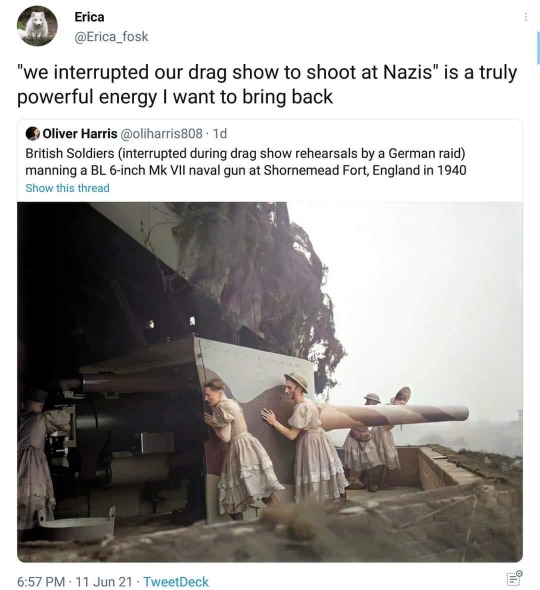
#history#wwii#history is gayer than you think#drag history#history of drag#historical drag#drag show#drag queen#trans rights#world war ii#queer history#lgbt history#we're all a little gay here
195K notes
·
View notes
Text
Building an Embodiment of the Fairytale Princess in Dnd 5e
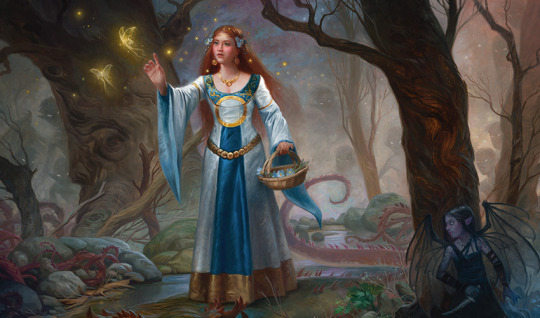
No matter who you are, when someone mentions fairytales, we all think of the stock characters. You’ve got your beloved princess, your charming prince, and your tempting witch, with maybe a malicious dragon thrown in for flavor. And that’s what we’re looking to build today. Not any specific princess, but rather an amalgomation of every fairytale princess and princess trope in one character.
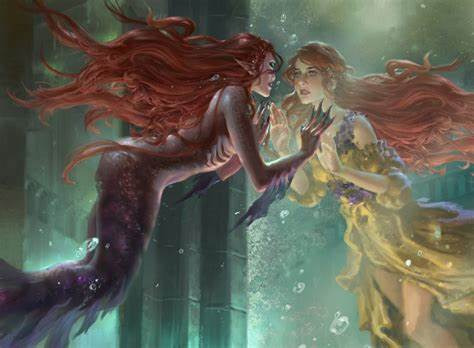
For race, we’ll go with a human, or to be more specific a variant human. We were blessed by fairies since birth, and they gave us the gift of magic. The fairies gave you magical beauty and grace for +1 CHA and +1 DEX, as well as the gift of song for Performance for your fey-blessed skill. Tasha’s introduced the new feature Fey-Touched which gives our princess +1 CHA, the spell Misty Step, and one other 1st level divination or enchantment spell from any spell list. Charm Person, Command, and Sleep are all fine options.
For alignment, we’re practically a saint, so we’re lawful good.
And for background we’re a pretty obvious Noble for Persuasion and History.
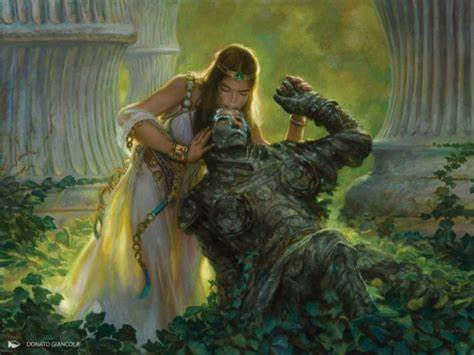
To be a classic fairytale princess, we’re going to need to be able to sing, summon critters to do our chores, and have a fairy godmother who watches over us. The best way to do all three is to be a Bard and an Archfey Warlock. However, in order to use the Bard to their full extent, the Bard has to reach level 18 to get all of their bardic secrets. Luckily, everything we need from the Warlock can be gotten in the first two levels. All we need from Warlock are the spells Eldritch Blast, Mage Hand, Armor of Agathys, Charm Person, and Unseen Servant. Then we get two eldritch invocations, we’ll pick up Beast Speech so we can talk to animals permanently and agonizing blast to make our eldritch blast a more effective cantrip.
For this build, Charisma is our top priority. We’ll want a good Constitution to maintain concentration spells, a good Dexterity since all we’re wearing is a set of clothes (fine), and a good Wisdom score primarily for the use of Animal Handling. Strength and Intelligence will get dumped. We’ll be sure to take up expertise with Animal Handling, Persuasion, Performance, and Religion, because you’re a good medieval girl who eats all her vegetables and goes to bed on time.
Fairytale-Based Spells
Basic Fairies
Dancing Lights: they’re called fairy lights for a reason. Faerie Fire: faerie lights that help you keep track of foes. Healing Spirit: a nature spirit with a fey appearance that heals your party. Spirit Guardians: They can take on a fey appearance, dealing radiant damage Conjure Woodland Beings: You summon fey creatures to help you fight. Conjure Fey: you summon a greater fey to help you fight
Snow White
Armor of Agathys: Surround yourself in a barrier of ice when injured. Reflavor as Snow White’s glass coffin.
Cinderella
True Polymorph: the fairygodmother turned mice into horses and a pumpkin into a carriage. Wish: everything the fairygodmother did was to make Cinderella’s wish come true.
Sleeping Beauty
Dawn: a loose connection, but one of sleeping beauty’s names is Aurora or Dawn. Dream: useful for when you’re asleep and need to call someone to save you. Wall of Thorns: to keep the princess safe, the fairies raised a ticket of thorns around the castle, which only parted for the handsome prince.
The Little Mermaid
Suggestion: Mermaids have hypnotic voices that lure men to their deaths. Tidal Wave: Mermaids control the tides and waves Mass Suggestion: How to brainwash an entire ship crew. Control Weather: Mermaids were blamed for violent sea storms. Tsunami: Like tidal wave, just bigger and more destructive.
Beauty and the Beast
Unseen Servant: In the original story, the beast’s servants were invisible. Tiny Servant: to bring a tiny object to life, like the Disney version. Animate Objects: make the room attack someone, like the Disney version. Charm Monster: beauty soothes the savage beast.
Rapunzel
Rope Trick: You create a safe pocket dimension that can only be reached by climbing. Galder’s Tower: create a two story tower. Reminiscent of Rapunzel’s Tower.
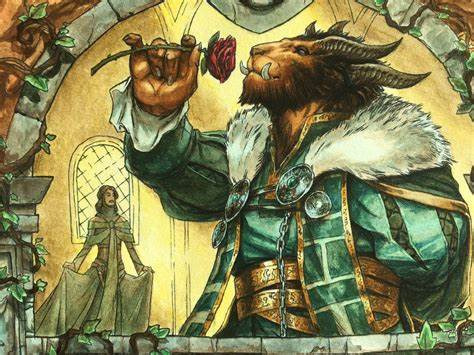
Race: Variant Human Background: Noble Alignment: Lawful Good Class: Glamour Bard (18) Archfey Warlock (2) Base Stats: Strength: 8 (-1) Dexterity: 14 (+2) Constitution: 16 (+3) Intelligence: 10 (0) Wisdom: 14 (+2) Charisma: 20 (+5) Saving Throws: Strength: -1 Dexterity: +8 Constitution: +3 Intelligence: 0 Wisdom: +2 Charisma: +11 Combat Stats: HP: 163 AC: 13 Speed: 30 Initiative: +2 Proficiency Bonus: +6 Passive Perception: 18 Dark Vision: 0 feet Proficiencies and Expertise: Animal Handling (+14) History (+6) Perception (+8) Performance (+17) Persuasion (+17) Religion (+12)
Spell Slots
1st (6) 2nd (3) 3rd (3) 4th (3) 5th (3) 6th (1) 7th (1) 8th (1) 9th (1)
Fairytale Spellbook
C Dancing Lights, Eldritch Blast, Friends, Light, Mage Hand, Mending 1 Armor of Agathys, Charm Person, Command, Faerie Fire, Healing Word, Sleep, Unseen Servant 2 Animal Messenger, Enlarge/Reduce, Enthrall, Healing Spirit, Misty Step, Suggestion 3 Conjure Animals, Mass Healing Word, Spirit Guardians, Tiny Servant 4 Charm Monster, Conjure Woodland Beings 5 Animate Objects, Dream 6 Mass Suggestion, Wall of Thorns 7 Mord’s Magnificent Mansion 8 Glibness 9 True Polymorph, Wish
Actions:
Countercharm. Creatures within 30 feet get advantage against being charmed or frightened following a performance check.
Bonus Actions:
Bardic Inspiration. Add 1d12 to an ally’s d20 roll 5 times per long rest.
Features:
Eldritch Invocations. Agonizing Blast. Add your Charisma mod to your Eldritch Blast damage rolls. Beast Speech. Cast Speak with Animals without using a spell slot. Enthralling Performance. Up to 5 creatures must make a DC 19 WIS saving throw or become charmed by you. Fey Presence. Creatures within 10 feet make a DC 19 WIS saving throw or become charmed or frightened by you until the end of your next turn. Font of Inspiration. Regain all uses of Bardic Inspiration on a rest. Jack of All Trades. Add +3 to skill checks you’re not proficient in. Magic Initiate. Choose two cantrips and a 1st level spell from the cleric spell list. Mantle of Inspiration. As a bonus action, give up to 5 creatures within 60 feet 14 temp HP points, and they can move without provoking an opportunity attack. Position of Privilege. You are welcome in high society, common folk go out of their way to accommodate you, and you can get an audience with other nobles. Song of Rest. Regain 1d12 extra HP on a short rest after singing. Unbreakable Majesty. Take on a majestic appearance for 1 minute, the first creature to target you each turn must succeed on a DC 19 Charisma saving throw or choose another target. If it succeeds, it has disadvantage on saving throws against your spell DC next turn. Use once per long rest.
Fairytale-Based Items

Pumpkin Carriage (Cinderella)
Common Wondrous Item - Vehicle
Weight: 600
This vehicle ignores difficult terrain.

Glass Slippers (Cinderella)
Rare Wondrous Item - Attunement Required
Your movement speed isn’t slowed by difficult terrain, and spells and other magical effects can’t reduce your speed. However, you cannot cross terrain that would harm you, such as lava. Because the shoes fit only one person in the entire kingdom, this item requires attunement.

Golden Stair (Rapunzel)
Rare Wondrous Item - Attunement Required
Your long hair can be used as a Rope, Hempen and a Grappling Hook. It’s attached to your head, so it cannot be broken, stolen, lost, or used up. The hair can also be used like a lasso to bind and pull switches or objects weighing 10 lbs or less closer. It has a range of 60 feet. Because it is attached to your body, this item requires attunement.

Sleeping Spindle (Sleeping Beauty)
Rare Weapon (Dagger)
This cursed spindle deals 1d4 piercing damage. When a creature is struck by this blade, they must succeed on a DC 15 Constitution saving throw or fall into a magical sleep for 24 hours. The curse can be broken by the spell Remove Curse. Once the curse has been used, it cannot be used again until the dawn of the next day.
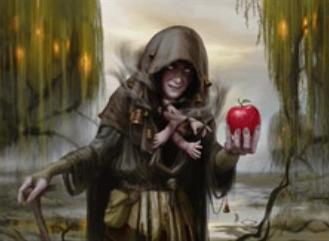
Poison Apple (Snow White)
Common Weapon (light, thrown)
When this item is thrown, deal 1d4 bludgeoning damage to any creature it hits. When this item hits a creature or a solid surface, it explodes, creating a poisonous cloud within 5 feet centered on where it landed. Creatures inside the area of the cloud take 1d4 poison damage and make a Constitution saving throw against DC 10 + your INT mod or become poisoned. Crafting: requires fresh fruit, a poisoner’s kit, and knowing at least one spell. Crafting takes 10 minutes.

Ring of Teleportation (Beauty and the Beast)
Epic Ring - Attunement Required
Choose up to three locations you have been to before and know well. Once per day, turn the ring three times and you and any creature touching you will be teleported to whichever location you desired. You can change your three saved locations at any time, but you must be at the location to save it to the ring. The ring resets at dawn following its last use. Because the ring can only take you to places you’ve been before, the ring needs to be attuned to you.
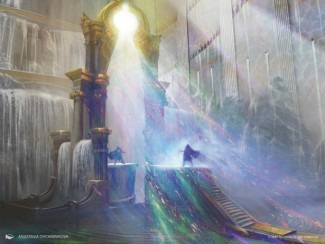
Magic Mirror (Beauty and the Beast/Snow White)
Legendary Wondrous Item
Once per day, choose one of the following:
Cast Scrying without using a spell slot. The mirror will show you what you ask to see.
Cast Legend Lore without using a spell slot. Ask the mirror a question and it will answer truthfully to the best of its ability.
5K notes
·
View notes
Note
So I saw you're old post about how to make Lucifer in DnD, but no, I want to make the other 6 sins, could you possibly help?
Sure, I'd consider it. Besides, with the new 2024 rules, Lucy needs an update anyway.
4 notes
·
View notes
Text
New Shipping Terms Maybe?
We use the word shipping a lot, and sometimes ships are even literally used to represent couples in a fandom, so why not take the terminology to the next level?
Possible Shipping related terminology:
Captain - a shipper who produces a lot of fan content for 1 ship. Admiral - a shipper who produces a lot of fan content for multiple ships in a single fandom. Main Sail - the ship you support more than any other pairings that you like Fleet - a group of ships that a single fan supports Armada - the collective of ships of a particular fandom (ie. Tododeku, Kiribaku, Izuchaco, etc. for the MHA/BnHA fandom) Topwind - the direction the canon seems to be heading. A shift in the topwind may change a ship’s course. Flag Ship - the main ship of a fandom, whether by the canon show (ie, Izuchaco or Kataang) or the one most favored by the fans (ie, Klance for Voltron) Canonball - any evidence from the canon used to sink someone else’s ships Canon Fire - the act of launching canonballs at someone’s ship Anchored - when a ship has stayed in one place for a prolonged amount of time. Sailor - a non-hostile shipper who actively creates or shares content that supports their ship. Artists, Fic Writers, and bloggers that share the content of others qualify as helping their ships sail. Gunner - A hostile shipper who launches canonballs at other people’s ships Passenger - a neutral shipper who enjoys the ride without helping or hindrance. Shipmate - another person on board the same ship as you Boatswain - someone who works to fix holes in the ship caused by canon Full-Rigged/First Rate - a ship with a lot of canonical evidence to support it, has an easier time sailing Warship/Battleship - a pairing whose shippers are very hostile and aggressive toward enemy ships Luxury Liner - a ship valued for aesthetic purposes, rather than practicality or function Cargo Ship - a ship with a lot of fanart, fan fics, and other non-canon material, despite having little canon support. Schooner - a very small ship, it does not hold up well against canon fire.
275 notes
·
View notes





